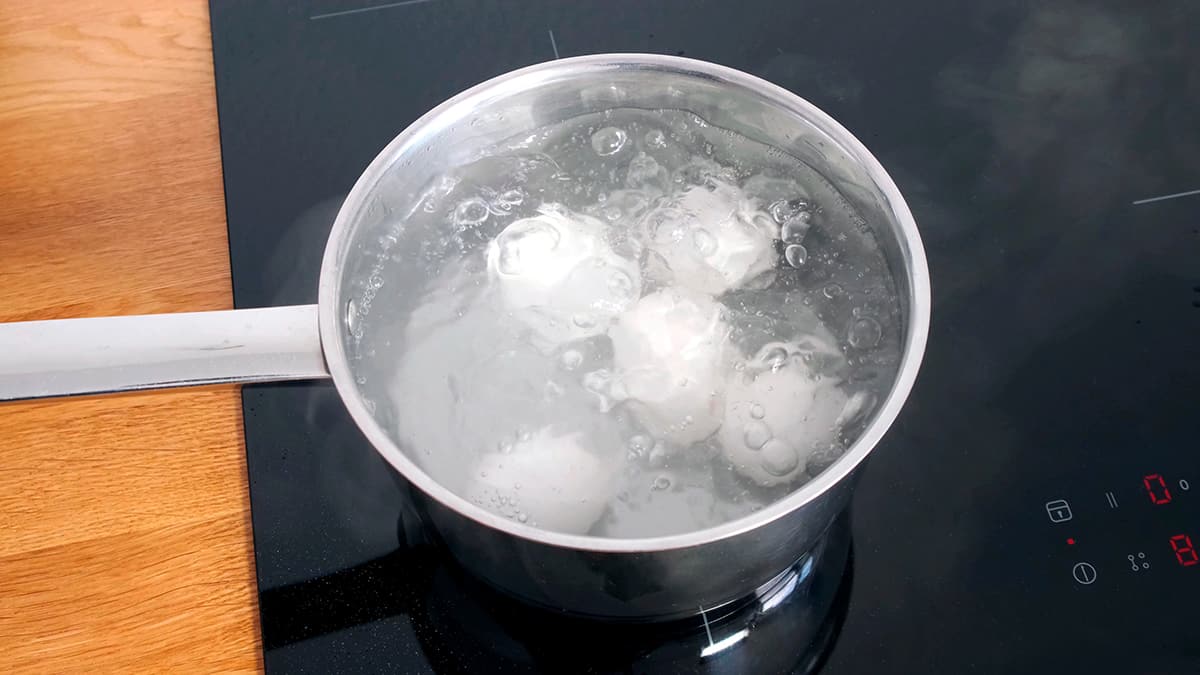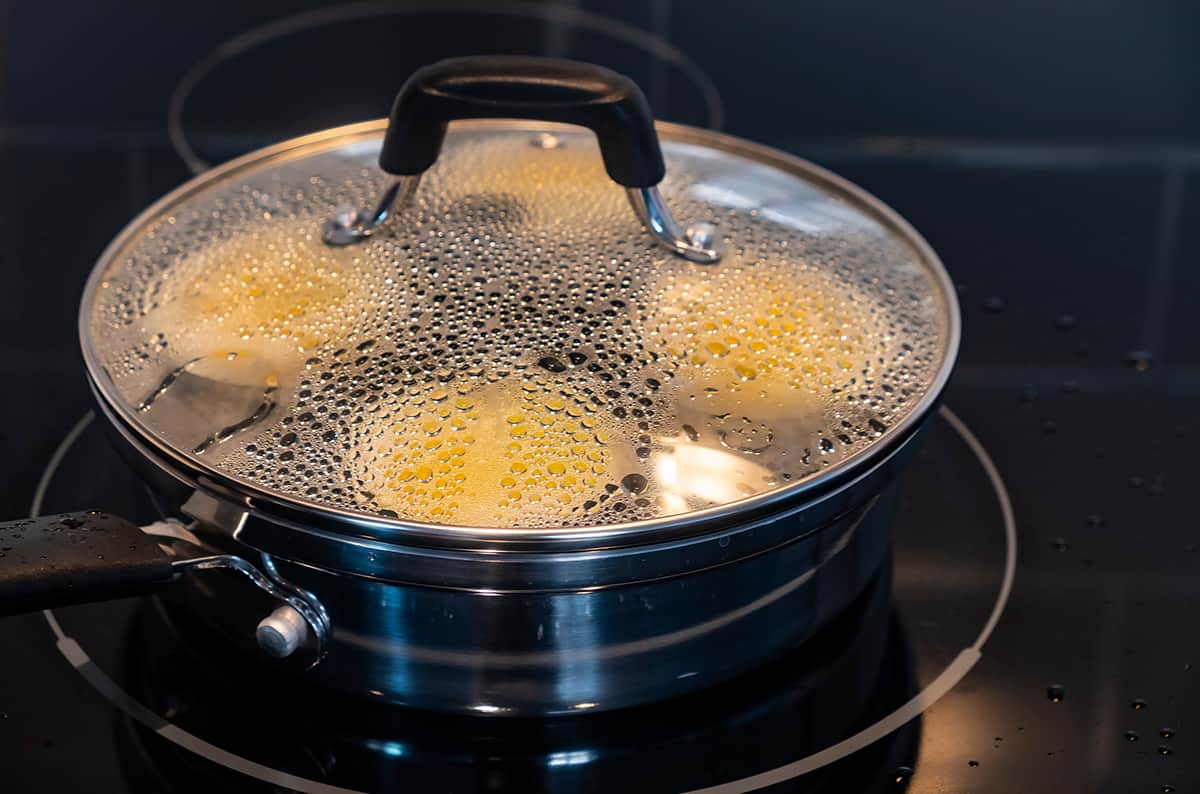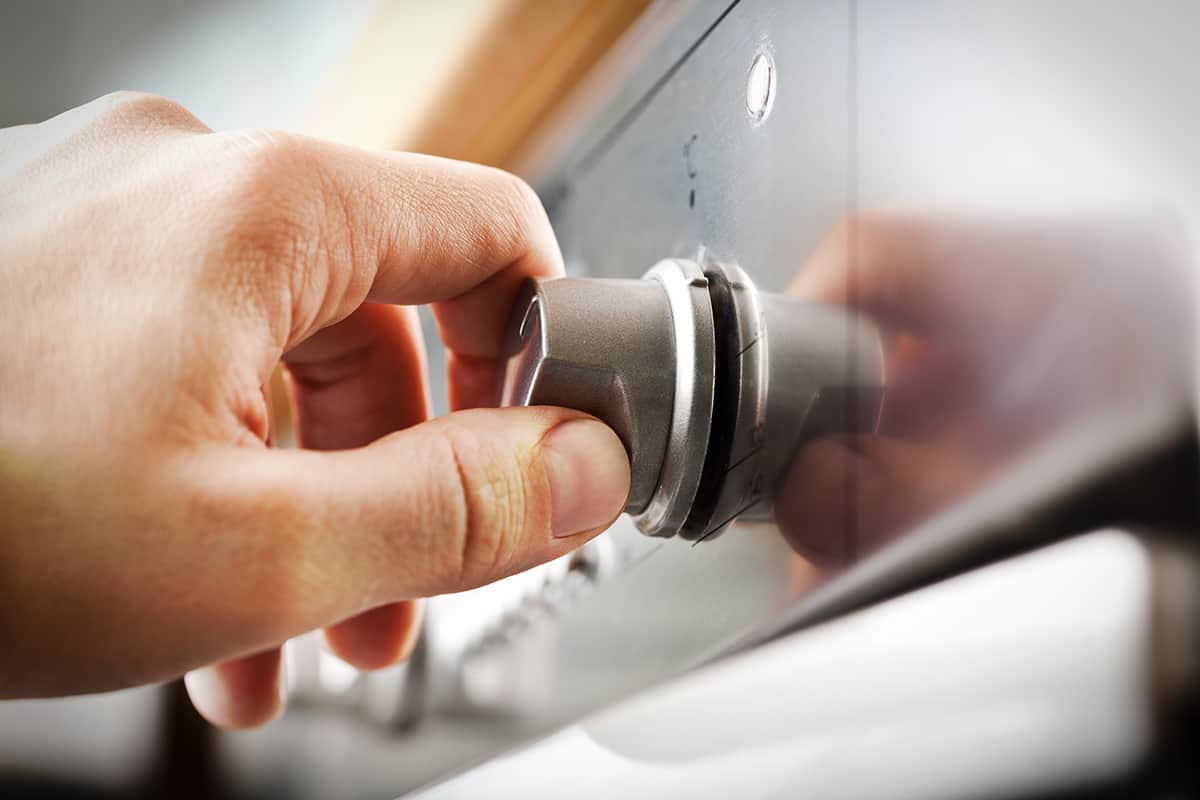We’d like to think that setting your stove to its highest temperature will cook your food faster, but what it might end up doing is charring the outside before the inside has time to cook. Also, if you only want to keep soups and stews warm before serving, you only need to turn the stove’s dial to its simmer setting. But how do you do this on an electric stove?
To turn your electric stove to simmer mode, you should turn the dial to its 2 or 3 settings. Doing this will increase the temperature of liquids to between 185 and 205°, so it doesn’t boil over.
However, since electric stoves aren’t all built the same, finding the precise simmer setting can be a bit tricky. In this guide, I’ll explain what simmering means and how to find the simmer setting on your electric stove.
What Is Simmering?

If you’ve ever cooked water before on high heat, then you’ve probably noticed how the bubbles in the pot gradually increase in size. When the bubbles are still tiny and don’t release noticeable amounts of steam when they pop on the surface, that’s the simmering phase.
From a technical standpoint, simmering refers to small bubbles that take between 1 and 3 seconds to form and float to the surface before ultimately popping. The higher you set your stove’s heat, the more violent the simmer becomes until it graduates to become full-blown boiling.
A recipe might ask you to heat a pot of water until it comes to a certain simmering level. Let’s take a look at each of them.
Bare simmer—The formation of the tiniest noticeable bubbles. They will appear in random spots in your pot and will take as long as 3 seconds to release from the base and float to the top. If you stir the pot of water, it will become somewhat cloudy as tiny bubbles are dispersed throughout the water. A bare simmer is ideal for slow-cooking stocks or keeping stews warm prior to serving.
Simmer—The formation of tiny bubbles that steadily release from the base of the pot and float to the top. Upon popping, the bubbles will not release wisps of steam, though there will be a steady flow of steam coming from the surface of the water. If your stew is still cooking, you should set your stove to simmer to gently break down your meats.
Vigorous simmer—The formation of medium-sized bubbles that quickly release from the base of the pot. The burst of each bubble releases steam, which can burn your hand if you place it to close to the rim of the pot. A vigorous simmer is usually used for thickening sauces without splattering.
Remember: the goal of simmering is to heat up liquid-based food without causing the liquid to boil over. So, your food should reach a temperature of between 185 and 200°F. Even though water boils at 212°F, pushing the temperature beyond the 200°F mark may cause your food to produce violent bubbles that splatter when they reach the surface. If a thick sauce needs to be simmered, boiling it can cause it to thicken too quickly or possibly lead to a scorched bottom.
Simmering vs. Boiling

Boiling is simmering on steroids. Water’s boiling point is 212°F, which is technically the hottest it can get before it turns into steam.
Similar to simmering, there are multiple stages of boiling (2, to be exact). Let’s take a look at what they are.
Regular boil—You’ll know when water is boiling when it releases large-size bubbles that do not linger on the walls or base of the pot. They will come skyrocketing to the surface and pop immediately. Boiling is mainly used to sanitize mason jars and soften vegetables and certain cuts of meat.
Roiling boil—The heat of your stove won’t just send the bubbles to the surface of the water, but they will also pop violently and release large amounts of steam. Some recipes may ask you to bring water to a rolling boil, so make sure to use a high-walled pot and never fill the water to the very top.
Simmering vs. Poaching

In the hierarchy of heating water, poaching is one level below simmering.
Poaching is a gentler form of simmering that involves raising the temperature of water to between 160 and 180°F. At such a low temperature, it can take forever to poach large slabs of meat or even hearty vegetables to become fork-tender. However, this cooking method is ideal for certain foods, such as eggs for eggs benedict, chicken breasts for chicken noodle soup, and pears for poached pears.
Because poaching is done at a relatively low temperature, it’s important that you season the poaching water with spices and herbs. Since poached foods usually do not undergo a second cooking process, you should infuse as much flavor into the food as possible. It’s generally a good idea to be a bit more liberal with your spices when flavoring poaching water.
What Number Is Simmer on an Electric Stove?
On a gas stove, figuring out the simmer setting is quite simple. You can adjust the dial on the fly to raise or lower the cooking temperature based on how violently the liquid is boiling. On electric stoves, however, finding the simmer setting can be more challenging.
For electric stoves with six heat settings, the simmer setting will be somewhere between 2 and 3. If your electric stove has 9 or 10 heat settings, then you should use levels 3 and 4. Sometimes, pushing it to 5 will produce vigorous simmering.
However, since not all electric stoves are made the same, you will have to do some experimenting to find out which simmering level works best for your recipe. I recommend starting off slow at 2 and slowly increasing the heat to 3 and 4. The first heat level may be too low to increase the temperature of your food in a significant way.
One of the most reliable ways to determine whether your food is simmering or not is by using a food thermometer. That way, you’ll have a good idea of what stove setting corresponds with the type of simmer you want to achieve.
Is Simmering the Same as Low Heat?

Yes and no.
In some electric stove models, low heat is defined as any heat setting between 1 and 3. Meanwhile, medium is usually between 3 and 6. So, medium would be too high to simmer, while low can be too low or just right. In other words, simmering lands somewhere between low and medium-low.
How to Simmer on an Induction Stove
The great thing about induction stoves is that they don’t require very much time to heat up. Because they run on the induction principle, which uses magnets to heat up the contents inside ferromagnetic pots and pans, induction stoves are a lot more efficient than gas and traditional electric ovens.
How much more efficient, you ask? On average, it will take 15 minutes to boil 1.5 gallons of water. To put that in perspective, it might take wood, gas, or coil stoves upwards of 30 minutes to do the same.
In addition, many induction stoves come with precise temperature settings. So, to simmer on an induction stove, all you need to do is set the heat to between 185 and 200°F. However, if your induction stove uses preset (numbers that correspond to different cooking temperatures), then you should start at two and work your way up from there.






